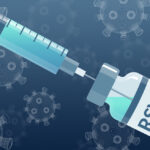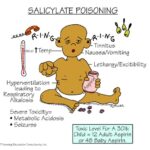Rubella, also known as German measles, is a contagious viral infection caused by the rubella virus. While mild or asymptomatic in most individuals, rubella poses a severe threat to pregnant women, as infection during early pregnancy can lead to congenital rubella syndrome (CRS). CRS results in miscarriage, stillbirth, or serious birth defects such as deafness, cataracts, heart anomalies, and intellectual disabilities.
Rubella vaccination is the cornerstone of prevention, aiming to eliminate both the disease and its devastating congenital consequences. Global immunization strategies, particularly the measles-mumps-rubella (MMR) vaccine, have dramatically reduced rubella incidence in many countries.

Rubella Vaccination Schedule and Eligibility
Childhood Immunization
The rubella vaccine is primarily administered as part of the MMR combination vaccine, according to the following schedule:
- First dose: 12 to 15 months of age
- Second dose: 4 to 6 years of age
These two doses provide long-lasting immunity in over 97% of recipients.
Adolescent and Adult Immunization
Unvaccinated individuals or those with unknown vaccination status should receive:
- One dose of MMR vaccine, particularly:
- Nonpregnant women of childbearing age
- Healthcare workers
- International travelers
- College students
Pregnant individuals must not receive the vaccine due to its live-attenuated formulation but should be vaccinated postpartum to protect future pregnancies.
Rubella Vaccine Composition and Mechanism
The rubella component of the MMR vaccine contains live attenuated rubella virus. Upon administration, the weakened virus stimulates the immune system to produce neutralizing antibodies without causing disease, thereby inducing immunity.
Key properties:
- Highly immunogenic
- Single-antigen rubella vaccine is also available in some settings
- Safe and effective when administered per guidelines
Importance of Rubella Vaccination in Women of Reproductive Age
Rubella infection during the first trimester of pregnancy carries up to a 90% risk of fetal damage. Hence, vaccination of women of reproductive age is critical in rubella control and CRS prevention.
Recommendations:
- Preconception screening for rubella immunity
- Vaccination at least one month prior to conception if non-immune
- Postpartum immunization for non-immune mothers after delivery
Routine screening in antenatal care settings ensures early identification and intervention.
Safety Profile and Contraindications
Rubella-containing vaccines are considered safe for the vast majority of recipients. Adverse effects are typically mild and transient.
Common Side Effects
- Fever
- Rash
- Mild lymph node swelling
- Joint pain (more common in adults)
Contraindications
- Pregnancy
- Immunocompromised individuals
- Severe allergic reaction to a vaccine component
A pregnancy test is not routinely required prior to vaccination, but recipients should be advised to avoid pregnancy for 28 days post-vaccination.
Rubella Elimination and Global Vaccination Strategies
Global Initiatives and Progress
WHO’s Global Vaccine Action Plan targets the elimination of rubella and CRS. Over 170 countries have introduced rubella-containing vaccines into their national immunization schedules.
Regions such as the Americas have achieved rubella elimination, demonstrating the effectiveness of high vaccination coverage.
Strategies for Success
- Routine childhood vaccination
- Supplemental immunization activities (SIAs)
- Adolescent catch-up campaigns
- CRS surveillance and response
Mass campaigns targeting women of reproductive age have proven especially effective in low- and middle-income countries.
Rubella Immunity: Serological Testing and Booster Policy
Rubella immunity can be confirmed through serologic testing measuring rubella-specific IgG antibodies. This is particularly useful for:
- Women planning pregnancy
- Healthcare workers
- Individuals from regions with unknown vaccine coverage
Booster Recommendations
Currently, routine booster doses beyond two MMR doses are not recommended, as immunity is considered long-lasting. However, in outbreak settings or among healthcare workers with equivocal titers, additional doses may be administered.
Rubella Outbreak Control and Herd Immunity Threshold
To prevent rubella outbreaks, a population immunity level of ≥ 85%–90% is necessary. When vaccine coverage drops below this threshold, rubella can re-emerge, especially in settings where adults missed routine vaccination during childhood.
Outbreak Response Measures
- Rapid vaccination of susceptible individuals
- Targeted immunization in affected age groups
- Public awareness campaigns
The Role of MMR in Comprehensive Disease Control
By incorporating rubella vaccination into the MMR combination, immunization efforts also combat measles and mumps. This integrated approach improves efficiency and coverage.
Benefits include:
- Synchronized dosing
- Cost-effectiveness
- Enhanced public trust in vaccine programs
Summary and Call to Action
Rubella vaccination remains a public health imperative, especially for protecting pregnant women and preventing congenital rubella syndrome. Universal childhood immunization, routine serologic screening of reproductive-age women, and postpartum vaccination are critical components of an effective rubella elimination strategy.
We encourage all healthcare providers, public health professionals, and caregivers to advocate for and facilitate complete rubella vaccination coverage to ensure a future free of this preventable disease.

